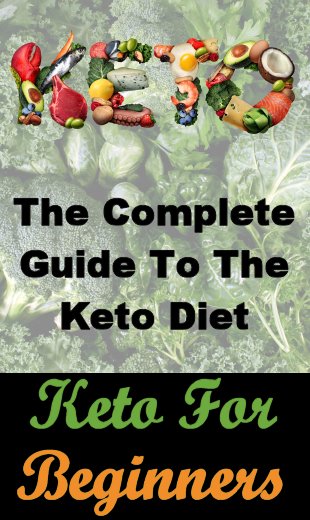8 Reasons To Bake Bread At Home
I’ve been making my own bread, on and off, for over 30 years, and to a degree, it’s in my blood, as they say.
When I was born, my parents and grandparents owned and ran a small bakery and confectioner’s shop, and for the first two years or so, which I don’t remember at all, we lived in a small flat above the bakery.
After my father bought his own business and sold the bakery in the early 1960s, he never made bread ever again for some reason.
The business he bought was a yeast merchant’s, and he supplied fresh yeast (and other essential ingredients) to a wide variety of small, family-run bakeries within a 30-mile radius of where we lived, so fresh bread (and cakes and pies) were staple food at our house.
As for me, I didn’t start making my own bread until the early 1980s, shortly after I got married for the first time.
My first few attempts were made using the oven in our cooker (or stove as some people would call it), and then, when we bought our first (primitive) microwave oven, I had success with that too.
Years later, after moving to a new town, I bought my first bread machine, and while the bread tasted great, it was never quite the same as “real” bread.
Since moving to the USA in 2005, I started making bread on a regular basis again, for reasons I’ll get to in a moment.
So, this article will be all about making your own bread – why would you want to do this, and a few options you can try.
Why Make Your Own Bread?
There are many good reasons, although when it comes down to it, you only really need one – it tastes a lot better!
- Aroma. The smell of freshly baked bread is like no other – which is probably why people selling houses often have some around to subconsciously appeal to potential buyers.
- Cost. When you take everything into account, it can work out to be a lot less expensive in the long run when you make your own bread.
- Creativity. The benefits of actually creating something, including bread, cannot be overstated, and there are two aspects to it when it comes to making bread.
Firstly, you are making something yourself (i.e. instead of just buying it), and secondly, once you understand the principles behind bread making, you can let your imagination run wild and experiment with all sorts of types of bread and recipes and ingredients.
- Ease. Although there is quite a bit of mystique to making bread, it’s not actually that difficult. The key thing to be aware of is measuring – as with so many baked goods, it’s crucial to use the correct amounts of each ingredient, so your measurements need to be especially accurate.
- Education. If you have children, letting them help you to make bread, or teaching them how to do it, is a great way to help educate them about where food comes from, and what is involved in making it. Because even though you are making the loaf itself, the ingredients (e.g. flour, yeast) still have to come from somewhere.
And, of course, they get to build confidence in themselves when they can see, and eat, what they made.
- Health. This is another of the key benefits of making your own bread – you get to decide which ingredients you use. This is why I re-started making bread after moving to the USA, because my late wife had a large number of dietary restrictions, and making our own bread was the only way we could avoid the issues usually associated with bread (e.g. gluten intolerance, amongst others).
Of course, there are those who would argue that all bread is bad for you, but as far as I’m concerned, it’s more like a spectrum – if you really enjoy bread (as I do), then you can at least choose to go for the healthier (or less unhealthy) options (e.g. by using other flours than wheat).
- Taste. Compared to the sliced loaves you buy in supermarkets, there really is no comparison. The only way to get that true bread taste, if you don’t make your own, is to buy it from a company who specializes in making bread the traditional way. (We’ve found Zingerman’s to be good quality and tasty.)
- Therapy. I’m not suggesting that making bread means you can stop seeing your therapist, of course, but when you make bread the old-fashioned way, with all of that mixing and, in particular, the kneading, it is relaxing and it takes your mind off other things that may be on your mind. In fact, some people even say it can be equivalent to meditation.
With all of those benefits, you’re probably wondering if there are any down sides – and the answer is, yes, there are.
The main one is time.
Making a loaf from scratch is not a quick process (e.g. because you need to leave the dough to prove and rise), and this is even true of bread machines – the loaves I used to make for my wife took about three and a half hours, once the machine had been turned on.
Other than that, you may need to buy equipment you don’t already have (e.g. loaf tins, bread machine), but these are usually one-time costs.
Bread-Making Methods
Once you’ve decided you want to make your own bread, you need to choose how you’re going to make it, so here are a few of the more common options:
- Oven. This is the traditional way, and how I started. And while most homes don’t have the same sort of ovens that bakers use, they work well enough. Your cooker or stove probably already has a suitable oven built in (although you need to allow enough height, of course), or maybe you have a standalone or built-in oven. And while some people have their personal preferences, electric or gas ovens can work well – I’ve used both without any problems.
- Microwave Oven. As I said earlier, it’s perfectly possible to make good bread in your microwave (assuming you use one of these – the jury is still out as far as I’m concerned about the health implications of these devices). What is fascinating is being actually able to see the bread rise as it proves then bakes. Just make sure you use the right type of loaf tin for a microwave, and that the interior is tall enough to accommodate the loaf as it cooks.
- Bread Machine. This is probably the most common option these days, and while the newer models have all sorts of features, the basic design hasn’t changed much.
The earlier models, including the one I first bought in England in the 1980s, only created square loaves, which looked a bit weird – and they have that hole / tear in the bottom where the mixing blade goes.
These days, with 2 lb machines, the loaves may be a more traditional shape (i.e. rectangular), and some models have hinged blades that eliminate the problems caused by the bread baking around the blades (although as we found out the hard way, these hinged blades are prone to breaking).
The one I use these days is actually an old Zojirushi machine (which was probably bought prior to 2005), but it still works well for what I need it for – newer models we tried all broke after a while, which is why we went back to this old workhorse.
This particular model seems to be unavailable now (this is the closest I can find), which is no surprise, given its age, but I have other appliances of theirs too (e.g. a kettle and rice cooker), and they are usually very reliable.
- Slow Cooker. A crockpot is another device that you may already have that can be used for making bread, although as the name suggests, this won’t be fast either. 🙂
- Dutch Oven. Often called a casserole, this is a type of dish that is made from metals such as cast iron or aluminium, or sometimes from ceramic, and, again, it’s a method of cooking food slowly at low temperatures, usually in an oven.
- Sous Vide. This is a machine that cooks food (which is sealed inside a waterproof pouch) very slowly in water, at a much lower temperature than usual (no more than 140 Fahrenheit, or 60 Celsius).
- Open Fire. I have a vague recollection of baking “bread” when I was in the boy scouts (or maybe cubs) back in junior school – we were given some bread dough to wrap around a stick (which we picked up from the school grounds, so no concerns about hygiene back in those days!) and then holding it over an open fire. The experience wasn’t fun, for me, but the cooked dough wasn’t bad. If you really want to make your own bread over a campfire, say, then this is an option.
- Tandoor. While less common in the West, these clay ovens are often used in India, not only to make their main food (e.g. the classic tandoori chicken) but also to make bread (e.g. naan). They can be purchased for both home and restaurant use, but they tend to be pretty expensive.
Recipes
There is no shortage of recipes available, both in books as well as on YouTube, and online generally.
If you’re a total beginner, then this one is a good place to start.
And after a lot of trial and error, which was based on my wife’s preferences, available ingredients, our bread machine, and possibly even the altitude at which I live (which is over 5,500 feet above sea level), we finally came up with a recipe that worked – for us.
It’s for a regular 2 lbs white loaf, and if you’re interested, you can download our recipe here.
Conclusion
If you’ve never tried making your own bread, I highly recommend you give it a go.
Provided you follow the recipe and instructions to the letter, it’s very difficult to make something that’s genuinely inedible. 🙂
Additional Resources
These are suggestions for those who wish to delve deeper into any of the above:







